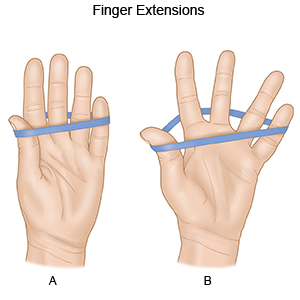100 Cello Warm-Ups and Exercises Blog 21: Alexanian Exercises — by Robert Jesselson
Today’s Blog is devoted to some thumb position exercises by Diran Alexanian that my teacher in Freiburg, Spanish cellist Marcal Cervera, gave to me in 1972. These exercises are not in included in Alexanian’s seminal book on cello technique, Traite Theorique et Pratique du Violoncelle (Theoretical and practical treatise of the violoncello).Alexanian’s book includes several pages of other thumb position exercises (pages 125 ff.) which are well worth practicing, but I believe that these 13 exercises have never actually been published. I do not know how Cervera got these exercises, but I copied them from his notebook, and studied them with him. I find them to be very useful. Alexanian was born in Armenia in 1881. He became Casals’ assistant at the École Normale de Musique in Paris. His treatise [...]
100 Cello Warm-ups and Exercises Blog 20: Thumb Position and the Upper Registers (Part 2) — by Robert Jesselson
In the first part of this series on thumb position (Blog #19), we discussed the basic techniques for understanding the geography of the upper registers of the cello. There are three concepts for knowing the “latitude and longitude” in this part of the instrument: 1. Using nodes and other fixed points for reference 2. Measuring distances: a) understanding and using intervals b) the “Configuration of the Hand” across string 3. Using the basic thumb position, as described above, and organizing the finger spacing with tetrachords We looked at #1 and #2a in Blog #19. Next we will discuss the “Configuration of the Hand.” 2b. Configuration of the Hand Knowing the intervals and distances on one string is vital in understanding the geography of the upper part of the cello. But one still needs [...]
100 Cello Warm-ups and Exercises Blog 19: Cello Geography Part 5: Thumb Position and the Upper Registers — by Robert Jesselson
Blogs #15 and #16 discussed the geography of the lower regions of the cello. In sorting out the “latitude” and “longitude” in this part of the instrument the main organizing principle is the knowledge and use of positions. We identify the positions by the location of the first finger on the string up through Seventh position, with “normal” and “extended” variants throughout. When the first finger is playing the A in seventh position on the A string the thumb is still behind the neck—so this is still considered neck position. Seventh position is a significant place on the cello, because it divides the string into two equal parts, and as a result we find the A harmonic there as well. After seventh position, the thumb is used as a [...]
100 Cello Warm-Ups and Exercises Blog 18: Cello Geography Part 4: The Fabulous Thumb — by Robert Jesselson
When students come to study cello with me in college they often arrive with problems in their fundamental technique which must be addressed: issues with collapsing fingers, bow angle, underlying tension, weak sound, etc. Most of these basic problems can be dealt with fairly quickly once the student becomes aware of the issues and knows how to fix them. However the bad habits that seem to be the most intractable are problems regarding the curvature of the thumb. In pedagogy classes and in talking with teachers I always emphasize that young cellists should be taught to train their thumbs correctly in order to help avoid excess tension and to allow maximum flexibility. Teachers need to be vigilant about this in the early stages of a cellist’s development in order to [...]
100 Cello Warm-Ups and Exercises Blog 17: Cello Geography Part 3: The “Mary System” — by Robert Jesselson
This blog will be the last one of the year – but we look forward to starting up again in 2016. In the first two blogs on Cello Geography we discussed the basic neck positions, and extensions. Next I would like to focus on a tool that I feel is helpful for sorting out one of the most important fingering principles on the cello: the “Mary” System. […]
100 Cello Warm-Ups and Exercises Blog 16: Cello Geography Part 2: Extensions — by Robert Jesselson
In many ways holding and playing the cello is just a “natural” addition to the body. The instrument rests nicely on our chest, we don’t need to twist and contort our arms like violinists, and if we employ weight, healthy balances and learn the ergonomically healthy use of the body we should have no pain or tension in playing. One of the only things that is not quite “natural” about playing the cello is our left-hand extensions. Stretching between the first and second fingers requires some specific training. As I mentioned in an earlier blog, I used to walk around Freiburg as a student with a cork between my fingers to help train this stretch: […]
100 Cello Warm-Ups and Exercises Blog 15: Cello Geography Part 1: Neck Positions — by Robert Jesselson
Learning to play a string instrument means having to figure out where the left hand goes on the fingerboard in order to play the notes. Since we don’t have a GPS system for the cello, most people initially learn where the notes are by knowing the positions. The positions are like the latitude and longitude of the cello, and knowing them can help organize the grid of the fingerboard. Unfortunately many students learn just First and Fourth positions, because then they can play almost all the notes in the lower part of the cello. However, that limits the myriad choices of fingerings that can produce different shifts, slides, string crossings, etc. It reduces the creative possibilities, and it can make it almost impossible to play difficult passages that require the intermediate [...]
100 Cello Warm-Ups and Exercises Blog 14: Isometrics, Strength and Articulation Exercises — by Robert Jesselson
In today’s blog I will discuss two related left-hand issues: finger strength and articulation, and offer some isometric exercises to strengthen the fingers. Finger Strength So, actual muscle strength is probably less important in cello playing than flexibility, release of tension, and gentle power. In Western culture one of the symbols of strength is a powerful tree, such as an oak tree or a chestnut tree. For example, in Longfellow’s poem The Village Blacksmith: “Under a spreading chestnut tree, the village smithy stands; The smith, a mighty man is he, with large and sinewy hands. And the muscles of his brawny arm…” However in some Asian countries strength is symbolized by a willow tree, which flows with the wind. In a storm, it is more likely for the powerful oak tree to fall than [...]
100 Cello Warm-Ups and Exercises Blog 12: Flexibility and Coordination Part 2 — by Robert Jesselson
Coordination Exercises In Part 1 of this blog on “Flexibility and Coordination” I discussed the flexibility of the fingers and wrist, and gave some left hand warm-ups such as finger-pushups and some bow arm exercises such as the “box” exercise. Today we will discuss some warm-ups that are useful to improve coordination. […]
100 Cello Warm-Ups and Exercises Blog 11: Flexibility and Coordination Part 1 — by Robert Jesselson
Today’s blog will deal with the twin issues of flexibility and coordination, which are closely related for string players. Flexibility is the range of motion of your joints and the ability to move freely. Flexibility can be improved by stretching, which we discussed in an earlier blog. Coordination refers to the relationship between different parts of the body during movement. […]
100 Cello Warm-Ups and Exercises Blog 10: Mentalization and Mimes Part 2 — by Robert Jesselson
As I mentioned in Part One of this blog on “Mentalization and Mimes”, I have found that in learning or relearning a physical task it is often very helpful to do it away from the cello. There are several ways that we can retrain our bodies, including through visualization, biofeedback, using a “phantom cello”, and with mimes. I discussed the benefits of visualization, or what I call Mentalization. Here is a practical example of how to do this: […]
100 Cello Warm-Ups and Exercises Blog 9: Mentalization and Mimes Part 1 — by Robert Jesselson
Although I am in China this week and next, I would like to share these two blogs on mental practice – it’s “mind over matter”. Playing the cello is very much a physical activity. Our ability to play is in many ways governed by how we hold the instrument and the bow. As soon as we take the cello out of the case and sit down our body automatically does what it is used to doing – […]
100 Cello Warm-Ups and Exercises Blog 8: Open String Warm-Ups Part 2 — by Robert Jesselson
Part Two of Open String Warm-Ups will continue with exercises for sautille, bow changes, string crossings, dynamics, etc. Bouncy Bow Exercise: This exercise is a great way to work on sautille, building it up from spiccato to the fast, uncontrolled sautille stroke. […]
100 Cello Warm-Ups and Exercises Blog 7: Open String Warm-Ups Part 1 — by Robert Jesselson
On most days I like to warm up with open strings. I love the sound of the open strings, and the feeling of the natural vibrations against my chest. I like to listen to the fundamental pitch, and then try to hear some of the overtones that make the tone color – a pure sound which connects me back to the earliest sounds of music, the aural “ur-sound” of the first stringed instrument played by a human being. […]
100 Cello Warm-Ups and Exercises Blog 6: Balance Exercises Part 2 — by Robert Jesselson
In Part 1 of this blog on finding balances, we discussed the large body balances which are useful in playing the cello. As Elizabeth Morrow wrote in a 2007 article in the American String Teacher journal: “Balance is a necessary component to arriving at maximum energy efficiency with minimal effort, a sensation we interpret as relaxation”. Next, we will explore some of the balances involved in using the bow. I prefer to use the term “bow balance” rather than “bow hold” or “bow grip”, because “holding”or “gripping” implies using muscles. Just as we prefer to use the term “arm weight” rather than “pressure” in describing the way to produce sound, the words we use influence the way we think about what we are doing. In our “bow balance”, the thumb [...]















